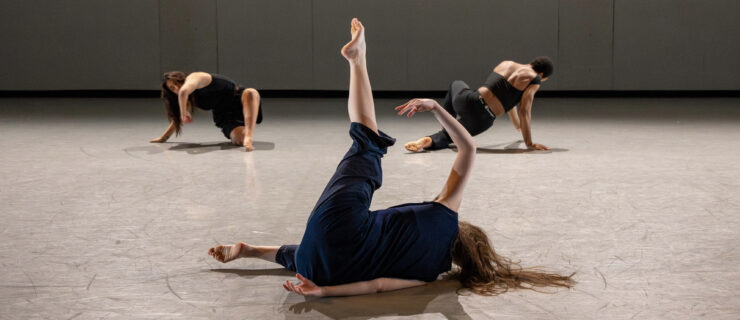What Really Happens When Your Hips Pop
Cracking hips are part of any dancer’s paradigm. But repeated popping, however painless, can irritate hip joints and cause problems later on. While most pops stem from muscle tightness that can be mitigated by consistent stretching, some cracks signal more serious problems. Here’s a guide to the three major places where pops occur, and why.
Where: Lateral hip area
When:
Shifting the hip to the side, for instance when you hold your foot in your hand and extend your leg to the side while your torso bends forward, as shown at right, a visible pop is seen on the standing leg where the greater trochanter pops out behind the lateral hip muscles. (The greater trochanter of the femur is the bump on the outside of the upper thigh.)
What’s Happening:
This pop is the most common, and is caused by a tight iliotibial band. Some dancers describe it as “dislocating their hip,” though technically this is incorrect. (Dislocated hips cause debilitating pain.)
Dangers:
Chronic irritation of the tendon and bursa, causing bursitis or tendonitis
Recommendations:
Release the tightness of the lateral hip area by rolling on a rubber ball against a wall or on the floor. Massage that releases tension, such as Swedish or sports massage, will also help. Stretch the outside of the hip: Stand with your weight on one leg and the other leg crossed over in front. Release your standing hip to the side and bend your upper body in the opposite direction.
Where: Front of the hip
When:
Lifting or lowering the leg to the front or to the side
What’s Happening:
The iliopsoas tendon (part of the iliopsoas muscle, the deepest hip flexor muscle) snaps over the bony ridge of the pelvis or femur.
Dangers:
The bursa underneath the iliopsoas tendon can become inflamed, causing pain when bringing your knees to your chest, at the height of a battement or in arabesque.
Recommendations:
Stretch the iliopsoas with a “runner’s lunge” 3-4 times a day, especially before and after dance class, and after sitting for long periods of time, such as in an airplane or a classroom. Hold the stretch for 1-2 minutes.
Where: Inside the joint, where the ring of cartilage called the labrum attaches to the edge of the socket.
When:
During any type of movement, including turn out, battement, jumps
What’s Happening:
The most painful of hip pops, this one is caused by a tear in the labrum. Signs of a labral tear include pain with specific movements, loss of strength, decreased range of motion and a catching sensation in the joint. Often, the dancer feels as if the hip is going to give out. These tears occur from chronic trauma, such as forcing turn out, or more often from acute trauma, such as from a fall. In rare cases, this pop can be a fracture to the neck of the femur or a loss of blood supply to the bone.
Dangers:
If you don’t seek treatment from a physician, labral tears can worsen, leading to permanent hip damage that may compromise your dance career.
Recommendations:
See your doctor. Surgery may be required if physical therapy and other noninvasive treatments are unsuccessful in reducing pain and increasing function. Cortisone shots, MRIs and arthroscopy may be used to diagnose.



